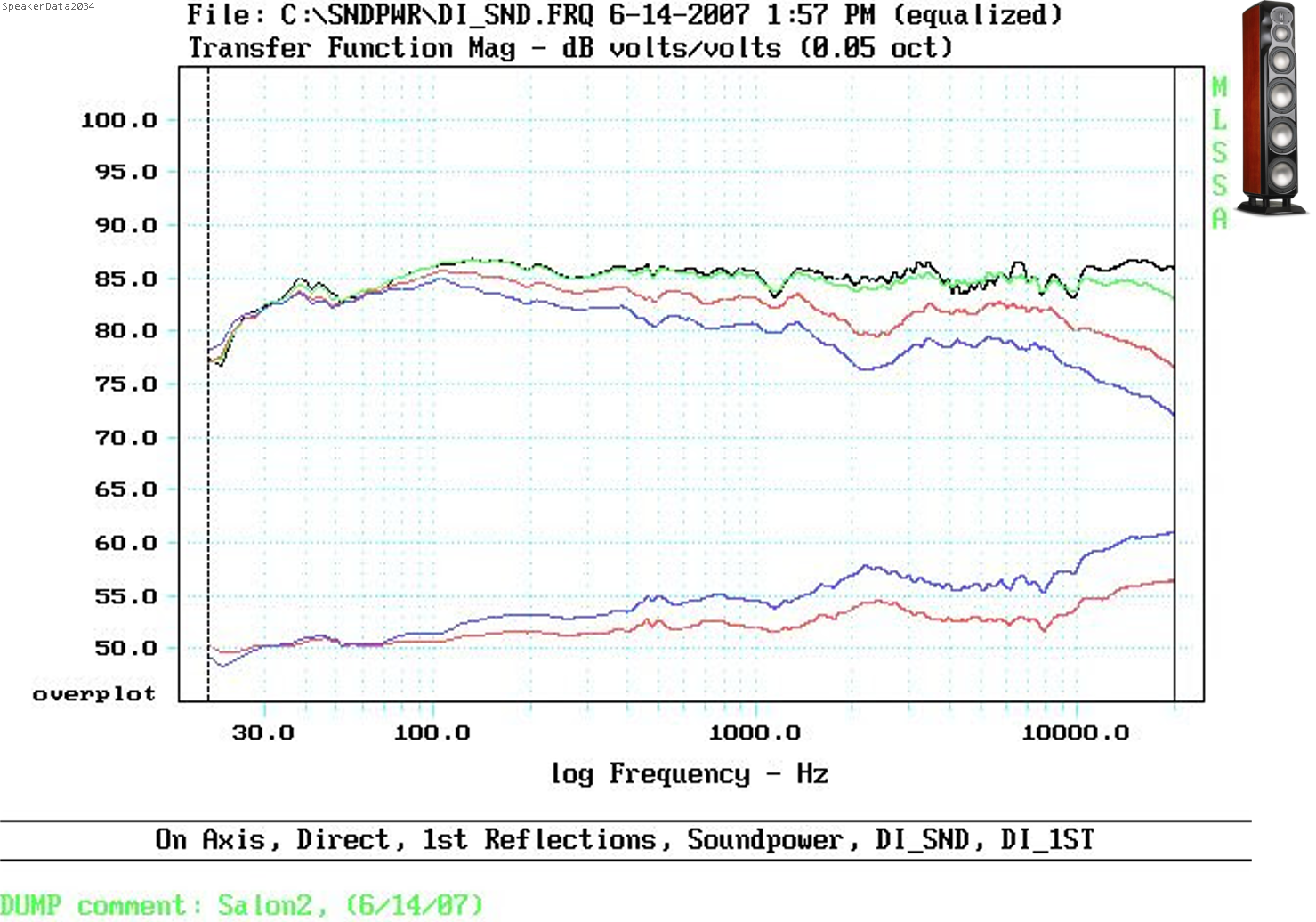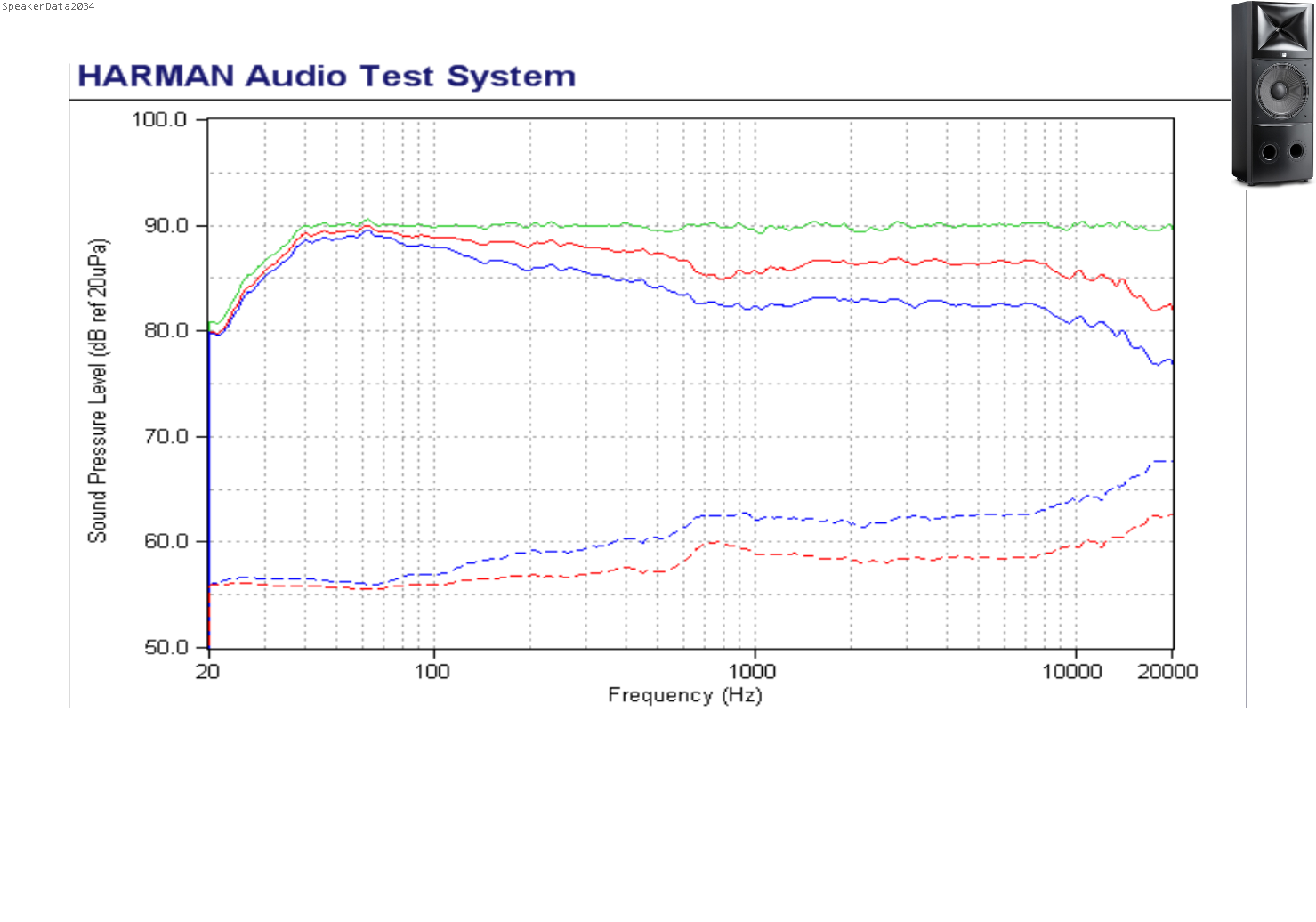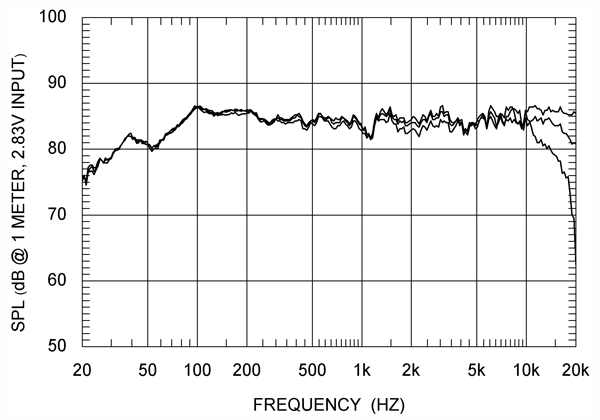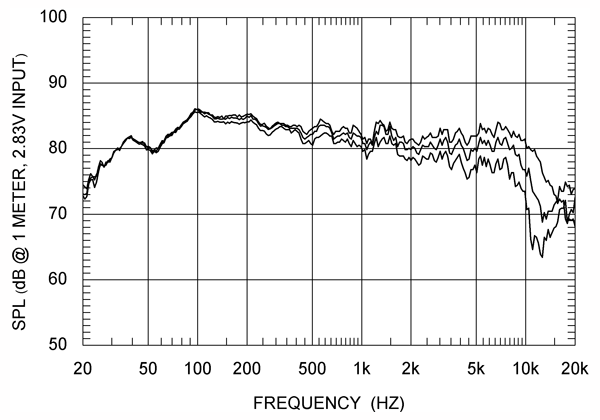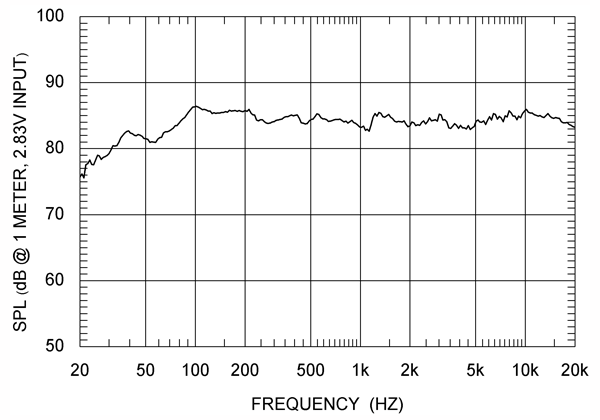That people preferred the Ultima2 Salon over M2 is interesting because the former produces a shallow dip in the presence region (off-axis) whilst the latter does a shallower dip in the midrange (off-axis):
If you were to look at the lateral data only (which the spinorama does not show) - you would see the Salon2 does not feature an off-axis dip and that dispersion itself remains very wide up about 10kHz.
I believe Dr Toole said that he believes the reason the Salon2 'won' this specific comparison was because of its wide horizontal directivity. Indeed, the Salon2 has some of the widest horizontal dispersion I've seen from a dome tweeter, moreover one with a waveguide.
This is the main thing I don't like about the spinorama: it makes it pretty hard to eyeball how 'wide' directivity is and makes little distinction between vertical and horizontal effects. You can sometimes see the impact by looking at the difference between the early reflections and sound power curve(since the early reflections curve includes only a handful of vertical curves but sound-power is the full shebang), but the Salon2 doesn't show much of a difference. Contour plots often use different color grades and scaling.
But good ol' SPL charts, make it clear what's happening at every angle. You can estimate directivity simply by looking at the SPL difference between the 0 curve or listening window and the 75 degree curve. In this case normalized plots can be handy too. In both cases it will also be evident by the spacing between the various angle curves.
You can see, for example, how much wider the Salon2's directivity(and the ultima line in general) is than some of its lower-tier siblings.
Performa M126Be (I believe all of the PerformaBe series use a similar waveguide and should have similar results). First Listening Window:
Now out to 75 degrees off axis:
There's a steep roll off after 5kHz. By 8kHz @75 degrees, you're down 10-12 dB.
Salon2:
It's immediately apparent the Salon2 has wider directivity. The curves remain tightly spaced, and by 8KHz, you're only down about 6-8dB from the Listening Window, plus the curve's overall shape mirrors the listening window more closely. The Salon2 will therefore sound 'bigger' and have a wider sweet spot on directivity alone.
That said, vertical reflections can still affect tonality. Though it's not something I think designers should aim for, it's possible that an early reflections dip in the presence region is less offensive than if it existed elsewhere.
(And for an example of a very high directivity speaker, the
Klipsch R-820F, down about 20dB)
Lastly, it's rather important to reiterate that though it seems a
majority people prefer wider directivity, it is not like linear frequency response where the trend is for basically everyone to prefer a more linear response, with some flexibility for age and tilt. Some people have strong preferences for different directivity characteristics, and that was evidenced in the Salon2 vs M2 Blind test as well. It's a point that is sometimes forgotten in this comparison.
"We had 11 critical listeners over the last two days, plus myself and my crew, for a total of 15 scores. Out of the 15, three people consistently preferred the M2s over the Salons2, while the rest preferred the Salon2s generally. We also had three people who consistently preferred the Salon2s down the line, track by track, while the "middle group" tended to prefer the Salon2s, tilting the results in their favor."
While the average listener preferred the Salon2, Three people consistently preferred the M2's, and three consistently preferred the Salon2.
It probably comes down to how much you value "focus" and "imaging" versus "spaciousness."
This might also suggest that in a different listening room - perhaps a very live one where there are already many early reflections - the results might be skewed differently. It's been noted people who people tend to prefer more attenuated reflections while mixing and louder reflections while mastering or listening recreationally.
So once again, when it comes to sound, it seems directivity characteristics are where individual preferences really come through.
You may be replying to someone else because I said nothing about crossovers.
Which makes you wonder why it is showing in the spinorama if it is not representative of the speaker's behaviour...
But the NRC measurements do show a dip and that dip appears to live in a narrow shelved up band. Weird stuff.
Note sure what you are referring to That 'dip' is hardly present in the NRC data. A shallow scoop of roughly 1-1.5dB. Audible but unlikely to be a significant 'tuning' choice. The dip in the early reflections and power curve of the spinorama is due to the vertical data.



